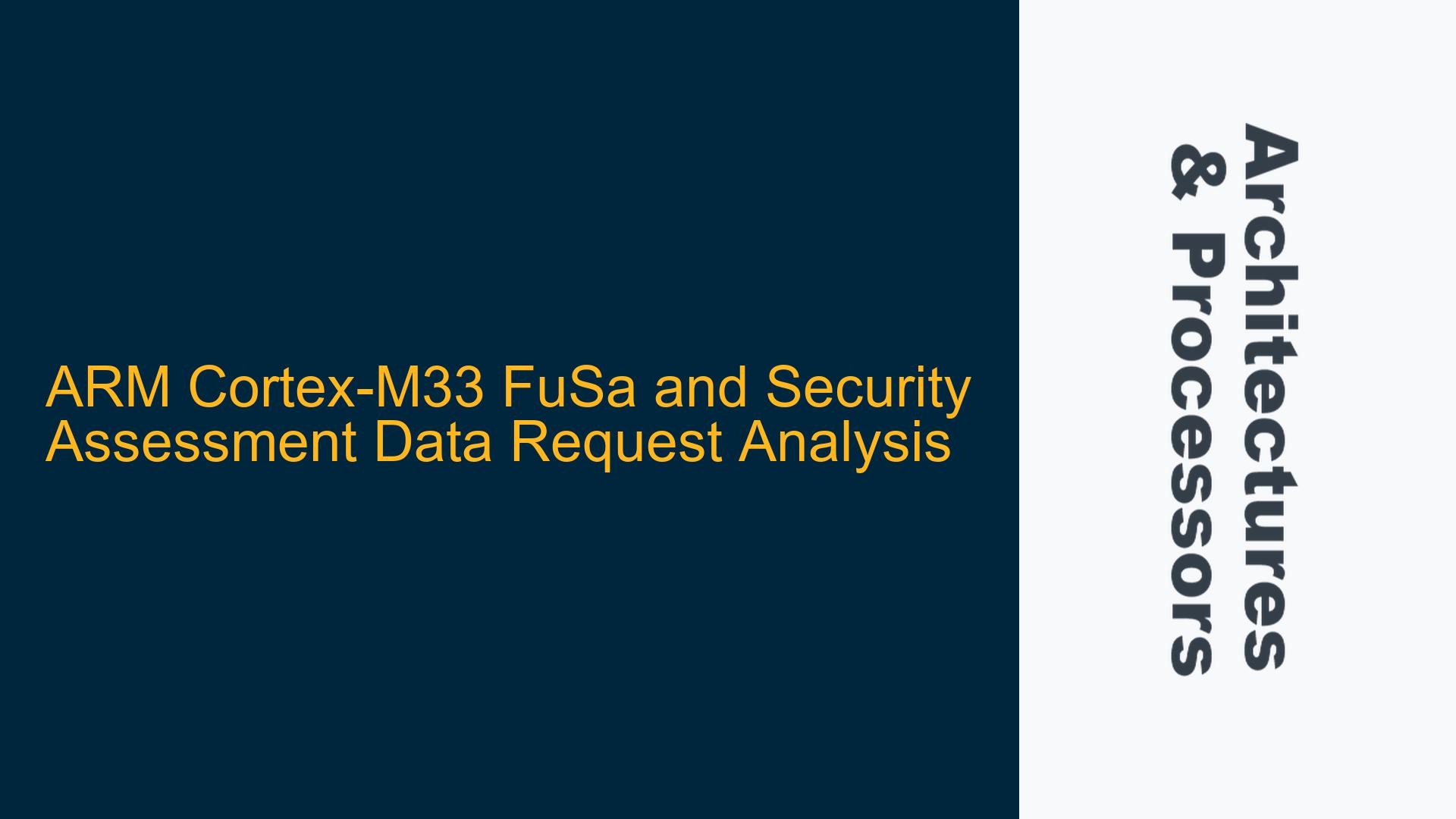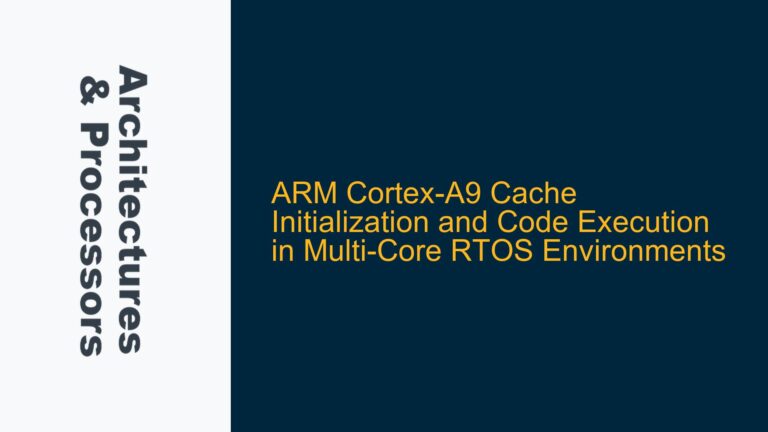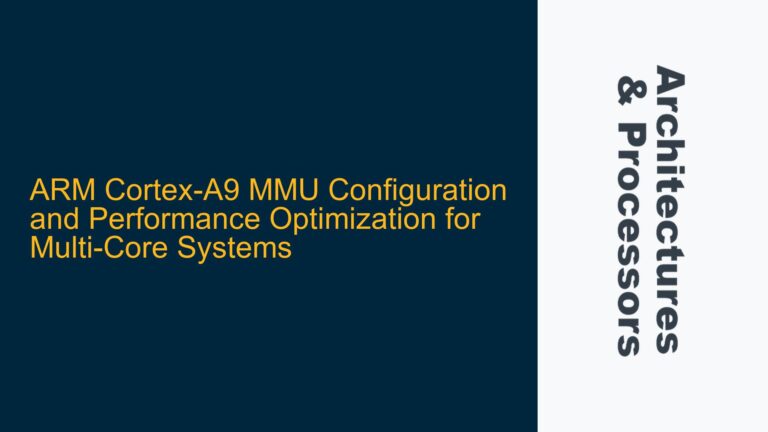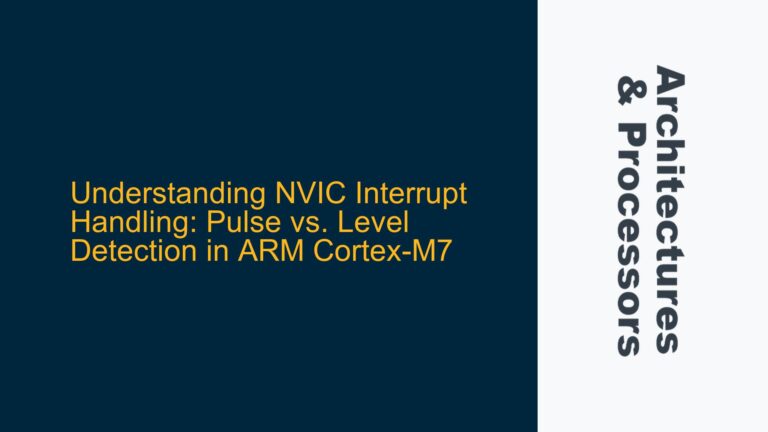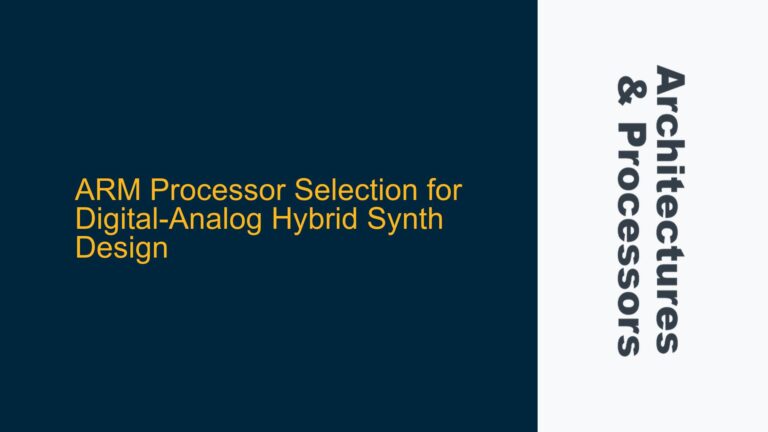Cortex-M33 FMEDA and Security Risk Assessment Requirements
The ARM Cortex-M33 processor is a highly capable microcontroller unit (MCU) core designed for embedded systems requiring both functional safety (FuSa) and robust security features. The Cortex-M33 integrates ARMv8-M architecture with TrustZone technology, making it suitable for applications in automotive, industrial, and IoT domains where safety and security are paramount. A key aspect of developing systems around the Cortex-M33 is the need for detailed Failure Modes, Effects, and Diagnostic Analysis (FMEDA) and Security Risk Assessment (SRA) reports. These documents are critical for compliance with functional safety standards such as ISO 26262 (automotive), IEC 61508 (industrial), and ISO 21434 (cybersecurity).
FMEDA is a systematic methodology used to identify potential failure modes within a system, assess their effects, and determine diagnostic coverage. For the Cortex-M33, FMEDA would involve analyzing the processor’s internal components, such as the CPU core, memory protection units, peripherals, and TrustZone security features, to evaluate their failure rates and the impact of such failures on system functionality. The SRA, on the other hand, focuses on identifying security vulnerabilities, assessing their risks, and proposing mitigation strategies. Given the Cortex-M33’s TrustZone implementation, the SRA would include an evaluation of secure and non-secure state transitions, memory partitioning, and potential attack vectors.
The absence of publicly available FMEDA and SRA reports for the Cortex-M33 poses a significant challenge for developers aiming to achieve compliance with functional safety and security standards. These reports are typically proprietary and may only be accessible under non-disclosure agreements (NDAs) or through direct collaboration with ARM. Without these documents, developers must either rely on generic safety manuals or undertake the time-consuming task of conducting their own FMEDA and SRA, which requires deep expertise in both the Cortex-M33 architecture and the relevant safety and security standards.
Challenges in Accessing ARM’s Proprietary Safety and Security Documentation
One of the primary challenges in obtaining FMEDA and SRA reports for the Cortex-M33 is the proprietary nature of these documents. ARM typically provides such detailed safety and security assessments to its partners and customers under strict NDAs. This restriction is understandable given the sensitive nature of the information, which could potentially be exploited if made publicly available. However, it creates a barrier for smaller development teams or independent developers who may not have the resources or established relationships with ARM to access these critical resources.
Another challenge is the complexity of conducting independent FMEDA and SRA for the Cortex-M33. The processor’s advanced features, such as its dual-core design (in some configurations), TrustZone security, and extensive peripheral set, require a thorough understanding of both hardware and software interactions. For example, the TrustZone technology introduces additional failure modes related to secure state transitions, memory partitioning, and secure boot processes. Similarly, the Cortex-M33’s memory protection unit (MPU) and nested vectored interrupt controller (NVIC) must be analyzed for potential failure modes that could compromise system safety or security.
Furthermore, the lack of standardized templates or guidelines for conducting FMEDA and SRA on ARM processors adds to the complexity. While ARM provides general safety manuals and security guidelines, these documents often lack the depth required for comprehensive safety and security assessments. Developers must therefore rely on their own expertise or consult external experts to fill in the gaps, which can be both time-consuming and costly.
Strategies for Obtaining and Utilizing Cortex-M33 Safety and Security Data
To address the challenges of accessing FMEDA and SRA reports for the Cortex-M33, developers can adopt several strategies. The first and most straightforward approach is to engage directly with ARM or its authorized distributors to request access to the necessary documentation. This may involve signing an NDA and demonstrating a legitimate need for the information, such as compliance with specific safety or security standards. While this approach may not be feasible for all developers, it is often the most reliable way to obtain accurate and comprehensive data.
For developers who are unable to access ARM’s proprietary documentation, an alternative approach is to leverage third-party safety and security assessments. Several consulting firms and certification bodies specialize in conducting FMEDA and SRA for embedded systems, including those based on ARM processors. These firms often have established relationships with ARM and may be able to provide the necessary documentation or conduct independent assessments on behalf of their clients. While this approach can be costly, it may be justified for projects with stringent safety or security requirements.
Another strategy is to utilize the available public resources and tools provided by ARM to conduct a partial FMEDA and SRA. ARM’s safety manuals, technical reference manuals, and security guidelines provide valuable insights into the Cortex-M33’s architecture and features. Developers can use these resources to identify potential failure modes and security vulnerabilities, and then apply industry-standard methodologies to assess their impact and develop mitigation strategies. While this approach may not be as comprehensive as using ARM’s proprietary reports, it can still provide a solid foundation for safety and security compliance.
In addition to these strategies, developers should consider collaborating with other stakeholders in the industry to share knowledge and resources. Industry consortia, working groups, and forums can provide valuable platforms for exchanging information and best practices related to functional safety and security. By participating in these communities, developers can gain access to shared resources, such as safety case templates, risk assessment tools, and expert advice, which can help streamline the FMEDA and SRA process.
Finally, developers should invest in training and education to build their expertise in functional safety and security. Understanding the intricacies of the Cortex-M33 architecture, as well as the relevant safety and security standards, is essential for conducting effective FMEDA and SRA. ARM offers a range of training courses and certifications that can help developers deepen their knowledge and skills in these areas. Additionally, there are numerous third-party training providers and online resources that offer courses on functional safety, cybersecurity, and ARM processor architecture.
In conclusion, while obtaining FMEDA and SRA reports for the ARM Cortex-M33 can be challenging, there are several strategies that developers can employ to overcome these challenges. By engaging with ARM, leveraging third-party expertise, utilizing public resources, collaborating with industry stakeholders, and investing in training, developers can build a robust foundation for achieving functional safety and security compliance in their Cortex-M33-based systems.
